Saint Theodora
Empress or Demon
My journey begins just 500 years after the birth of Christ. Christianity has become the official religion of the Roman Empire and the age is dominated by one of the most controversial and reviled women in history.
Even her official biographer, Procopius, wrote a vicious secret history of this woman, describing her as, “A prostitute who tore up the roots of the Roman Empire”.
The Catholic church was even more damning in its assessment. “This degenerative woman, Theodora, was another Eve who heeded the serpents. She is a denizen of the abyss and the mistress of Demons. It was she who, driven by satanic spirit and roused by diabolic rage, spitefully overthrew a peace redeemed by the blood of martyrs.”
But in the East, they tell a different story. I’ve been granted an audience with His All Holiness, the Supreme Head of the Orthodox Church, in St Mark’s in Istanbul, once the capital of the May Day Christian Empire, Byzantium.
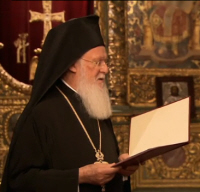
His All Holiness “Perhaps one of the most powerful and influential women in Byzantium is St Theodora, the Empress. After a troubled childhood and a personal spiritual journey, she was married to the renowned emperor, Justinian. St Theodora elevated the status of women by fighting for the rights of women.”
So what is the real story of this extraordinary woman, who is regarded as a saint in the East and the mistress of Demons in the West? Theodora was born in the sixth century A.D. in the great city of Constantinople, modern-day Istanbul. The Roman Empire had divided into two separate territories. Rome was the capital in the West and Constantinople in the East.
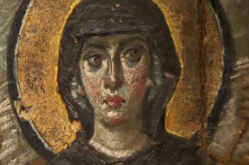
The Western capital was overrun by barbarians, but in the East, Constantinople proclaimed itself, “The heart of God’s Empire on earth”, and became the most powerful city in the Christian world. So you could see Rome never fell, it just moved 850 miles east.
The new Rome modelled itself full square on the old capital. There was a Senate, people spoke Latin and there was a very Roman passion for the chariot racing, which switched to a place right here in the ancient hippodrome. The hippodrome was the beating political heart of Byzantium, but it was also home to actors, dancers and circus acts who kept the crowds entertained between the races.
Around 500 A.D., the wife of a bee-keeper here gave birth to a girl called Theodora. Theodora didn’t just start life at the bottom of the social ladder. She was pretty much off the register. Her mother was described as an actress and a dancer, which was a polite way of saying a prostitute. To try to get a sense of horror the world felt, I’m meeting historian Haluk Cetinkaya.
So she inhabits an underworld here?
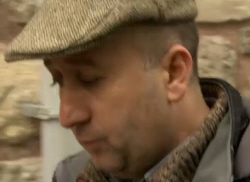
Haluk Cetinkaya “Definitely, because that was the place where the beggars, where the prostitutes, the dancers, actors, thieves, everything was there. All the bottom social strata was there.”
So it’s a really tumultuous time because you got pagans here and Christians.
Haluk Cetinkaya “Exactly. This is the transition period, but what’s impressive by then is the processions. For the first time in the history of the city, they had the processions of the icons, in particular, the icon of Mary.”
The cult of the Virgin Mary, the mother of God, was one of the most radical developments in Christianity. A short while before Theodora was born, it had swept through Constantinople. As a child, she’d have seen worshippers carrying Mary’s sacred image around the city. Viz the enormous icons were thought to radiate a kind of Christian force field and to protect the city from harm.
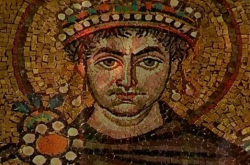
Haluk “It was a huge mosaic icon carried with great difficulty by four men.”
Four men? That’s a massive thing. That’s an impressive role model to have, as a woman?
As a teenager, Theodora became the mistress of a wealthy politician. They hit the road together but, after a few years, he dumped her. Rejected and homeless, she was befriended by a group of Christians who gave her shelter. Now she had faith, but little else.
She was in a very bad place. She’d pretty much run out of money. She had very few connections and now, as in discarded mistress, she was on the wrong rung on the social ladder. The young Christian had to fall back on the only skills she had.
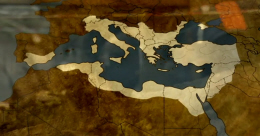
Then her luck changed when she came across a woman called Macedonia. Macedonia was a dancing girl by day but, by night, she was a spy for Justinian, the heir to the Emperor. Spotting Theodora’s potential, she recruited her to what was now a burgeoning Secret Service. Justinian, the nephew of the old emperor, was tipped to succeed his uncle. To build a power base and secure the throne, he used a network of spies to keep track of potential rivals.
Why do you think she was asked to be a spy?
Haluk “Because of her skills, because of her charm, because she was very much connected with every walk of life.”
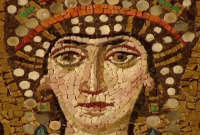
Is she accused of being a prostitute at this point in her life?
Haluk “Most probably she was. And the information she grabbed from bedhopping, from one to the other, she was able to divert into the administration itself.”
I wonder if that’s why she ends up meeting Justinian, because there’s rumour of this extraordinary woman. She’s beautiful, she’s smart, and she obviously achieves results as an informer.
Haluk “Definitely. Well, she played her cards quite well. She’s realised the rising star is Justinian. So, she definitely aimed at him. So, one way or the other, she had access to him, and she was able to prove herself to be worthy.”
She had her eye on a big prize.
When Justinian, the heir to the throne, met his spy, Theodora, he quickly fell under her spell. Within a year, she’d moved into the palace. Shortly afterwards, Justinian persuaded his uncle, the Emperor, to change the law to allow him to marry an actress.
